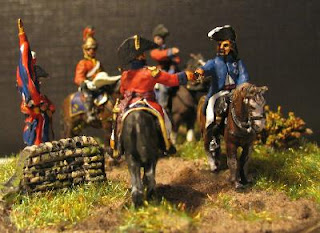Not knowing what to expect, I was impressed. The venue was excellent with plenty of free parking, plenty of space for layouts and traders along with good catering. Amongst the normal numerous trade stalls selling Bachman and Hornby products there were a few modelling accessory stalls. One which was new to me was Unit Models, http://www.unitmodels.com, who manufacture resin castings similar to Ten Commandments range.
There were many layouts on display covering most gauges. Kilbrandon, an Irish S gauge layout was a nice surprise, unfortunately non of my photos of this layout are worth posting. I'd borrowed the boss's SLR and was experimenting with settings, trying to avoid using the auto setting. I live and learn....
The O gauge Milford made an impression on me and one of the operators took time out to explain some of its finer points. This layout has been around for a number of years but it was the first time I'd seen it.
Milford
Milford
Milford
Another layout that I kept gravitating to was Colyer Street. A small Modern Image OO gauge layout based in Tyneside that was well presented and operated with a couple of friendly guys in front at the controls.
Colyer Street
Colyer Street

Dolores
Along with the British outline models there was a good selection of continental and American layouts. Unfortunately, due to my photographic experiments, only one photo is worth posting of these layouts. This little diorama is part of an Sn3 Scale American Narrow Gauge layout based in Colorado called Dolores.

Dolores
Other layouts that I enjoyed viewing for the first time were Calderwood, a fictitious Lancashire and Yorkshire Railway layout based in the Calder Valley and Bannochbrae, a small layout based in the Highlands of Scotland, both OO gauge.
Did I come away without spending any money? Well Bill Hudson Books were there so it was a no brainer that I'd part with some money. Gordon Gravett's book on Modelling Trees - part 2 Conifers was sitting on the passenger seat as I left the car park along with some Slater's plastic sprue purchased from Squires stall.
For me it was a surprise event, after checking out the web site I went along only expecting to be there for a couple of hours, instead I ended up stay for four hours, having to leave before I was really ready. I'll have to look out for this show next year and plan a visit to my mother in-law on the same weekend...











